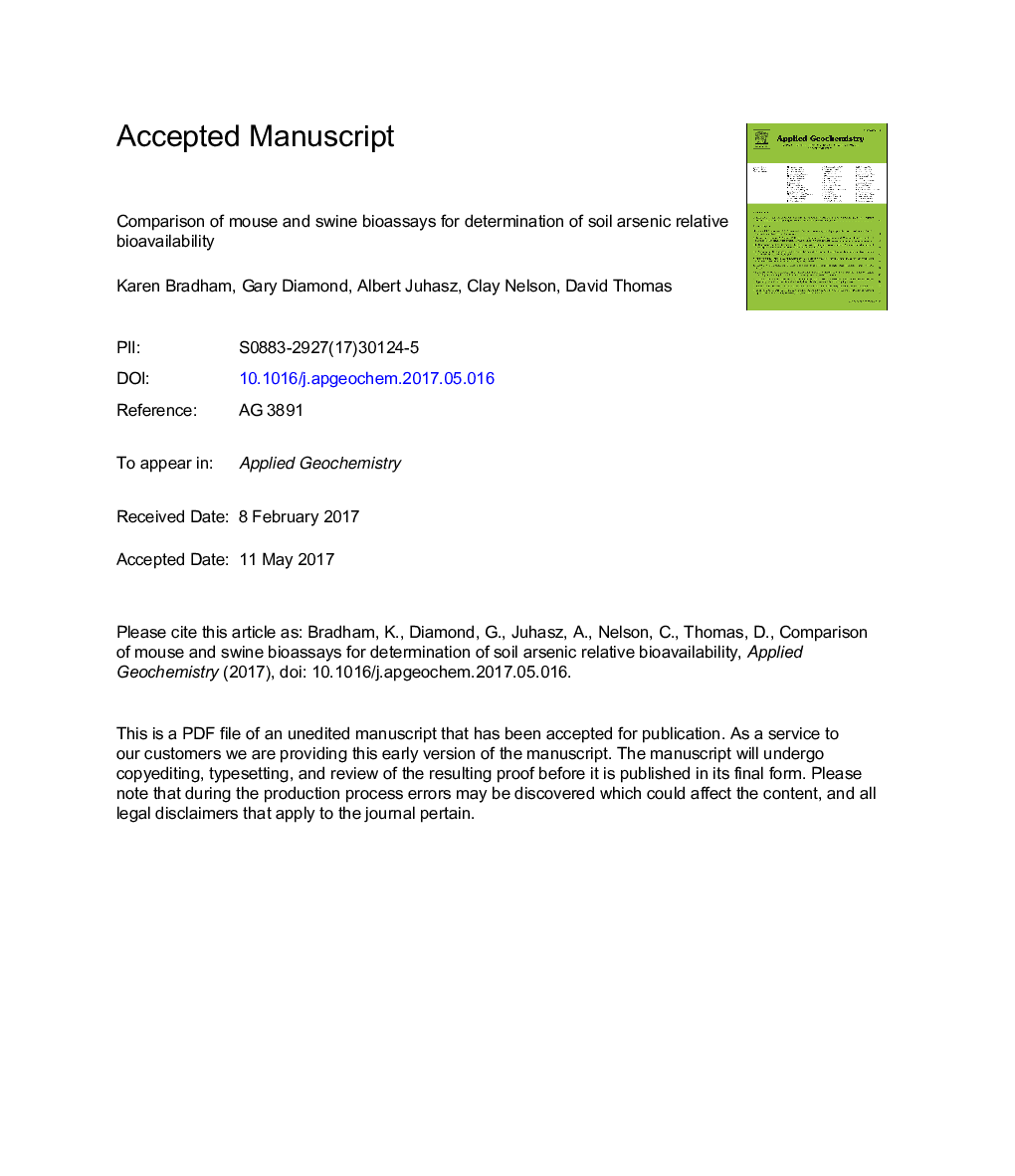| Article ID | Journal | Published Year | Pages | File Type |
|---|---|---|---|---|
| 8863228 | Applied Geochemistry | 2018 | 16 Pages |
Abstract
Evaluation of soil arsenic (As) relative bioavailability (RBA) is essential to accurately assess human exposure to As contaminated soils via the incidental ingestion pathway. A variety of animal bioassays have been developed to estimate As RBA in contaminated soils and dusts, with uncertainty regarding how physiological differences between animal models or differences in assay methodologies may influence As RBA estimates. This study compared As RBA estimates across 20 As pesticide and mine-impacted soils in two commonly utilized animal bioassays, a mouse model based on steady state urinary excretion factor (UEF) and two swine models based on UEF and area under the curve (AUC), to elucidate factors influencing As RBA estimates. Multiple regression analysis supported combining the RBAs from swine UEF and swine AUC assays into a single regression model. The weighted least squares regression model derived from these data was as follows: swine RBA (%) = 1.23·mouse RBA (%) - 0.80 (R2 = 0.50). The mean relative percent difference between swine and mouse RBAs was +13%. This study extends and confirms conclusions from previous smaller studies to indicate that mouse and swine As RBA assays yield similar RBA estimates when applied to the same soils, although there appears to be a trend for the swine assay to predict higher RBAs than the mouse UEF assay.
Related Topics
Physical Sciences and Engineering
Earth and Planetary Sciences
Geochemistry and Petrology
Authors
Karen Bradham, Gary Diamond, Albert Juhasz, Clay Nelson, David Thomas,
